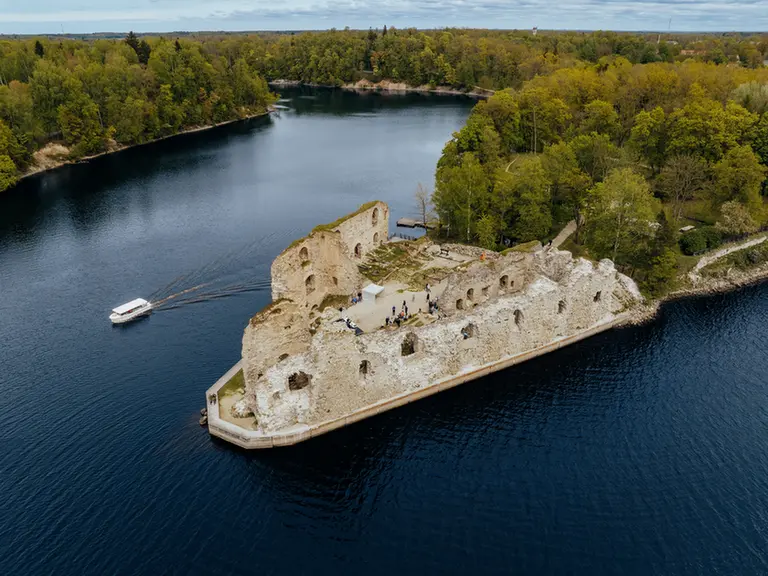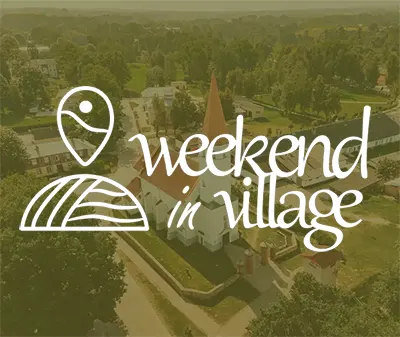
Koknese Medieval Castle Ruins
Kokneses parks, Koknese, Aizkraukles novads, Latvija
Koknese Castle was one of the largest and most important medieval castles in Latvia. The construction of the Riga Archbishop's stone castle began here in 1209 and within a short time a huge castle with a forecourt and the fortified town of Koknese next to it was built. During next centuries it became the residence of the Archbishop of Riga. The castle and the town were repeatedly devastated. Koknese Castle was abandoned after the western towers were blown up during the Great Northern War in 1701 and impressive ruins have survived to this day. After the Pļaviņas Hydroelectric Power plant reservoir was flooded, the water reached the castle foundations. The ruins of the medieval castle of Koknese still bear witness to the former grandeur of the ancient Hanseatic city. The castle ruins are now the venue for theatrical performances, concerts, money minting, virtual flights and old Latvian wedding ceremonies. The historical exhibition in the castle ruins pavilion gives insight about the previous scenery of the place. You can buy Koknese souvenirs and see a model of Koknese Castle. The Torture Chamber is open to the public and an audio guide is available. At the ruins of the medieval castle of Koknese there is a boat stop from which boats leave in summer and SUP boards, boats and catamarans can be rented.
Koknese hillfort was already inhabited at the end of the 1st century BC. At the beginning of the 13th century, it was inhabited by Latgalians and Selonians. There was a wooden castle ruled by Vetseke. Around 1209, a stone castle was built under Bishop Albert, which became one of the strongest Livonian fortresses. The castle's location on the Daugava River contributed to the city's growth, making it an important trading centre and a member of the Hanseatic League. Koknese Castle served as a military and administrative centre, housing knights, clergy, servants and craftsmen. The area of the castle, separated by a dry moat and drawbridges, was the centre of daily economic life, with workshops, stables and servants' houses. Inside the castle, which was cold and dark, there was a brewery, bakery, kitchen, chapel and living quarters. In 1515-1566, the castle was modernised to accommodate firearms.Today, the ruins and customer service pavilion of Koknese Castle house artefacts recovered during archaeological excavations, including ancient blacksmith's work and decorative pottery oven shards.
Entrance fee:
- Adults - 2.50 EUR
- Adults (with QR code of Aizkraukle district mobile app) - 2.20 EUR
- pensioners, pupils, students (with ID) - 2.00 EUR
- repressed persons - EUR 1.00
- family (with 3+ family card) - EUR 6.00
- annual card (for residents of Koknese parish) - EUR 5.00
- 20 and more persons - 10%
Free admission:
- preschool children;
- disabled children (with ID)
It is possible to pay with payment cards.
 This virtual toure has been produced as part of the project LL-00061 "Digitally accessible and attractive Lost Culture Heritage tourism destinations in Zemgale and Northern Lithuania" (Reclaimed History), which is co-funded by the European Union under the Interreg VI-A Latvia-Lithuania Programme 2021-2027. Its contents are the sole responsibility of Aizkraukle local municipality and do not necessarily reflect the views of the European Union.
This virtual toure has been produced as part of the project LL-00061 "Digitally accessible and attractive Lost Culture Heritage tourism destinations in Zemgale and Northern Lithuania" (Reclaimed History), which is co-funded by the European Union under the Interreg VI-A Latvia-Lithuania Programme 2021-2027. Its contents are the sole responsibility of Aizkraukle local municipality and do not necessarily reflect the views of the European Union.
- Aizkraukle municipality and Koknese Tourism Information centre
1905. gada iela 7, Koknese
(+371) 29275412, (+371) 65161296 - Aizkraukle Tourism Information point
Lāčplēša iela 4, Aizkraukle
(+371) 25727419 - Jaunjelgava Tourism Information point
Jelgavas iela 33, Jaunjelgava
(+371) 27366222 - Pļavinas Tourism Information point
Daugavas iela 49, Pļaviņas
(+371) 22000981 - Skrīveri Tourism Information Point
Daugavas iela 85, Skrīveri, Skrīveru pagasts
(+371) 25661983 - Staburags Tourism Information point
Staburaga saieta nams, 2. stāvs, Staburags, Staburaga pagasts
(+371) 29892925 - Nereta Tourism Information point
Dzirnavu iela 5, Nereta, Neretas pagasts
(+371) 26674300 - Mazzalve Tourism Information point
Skolas iela 1, Ērberģe, Mazzalves pagasts
(+371) 26156535 - Irši Manor Barn - Magazina
Irši, Iršu pagasts
(+371) 26344757

















